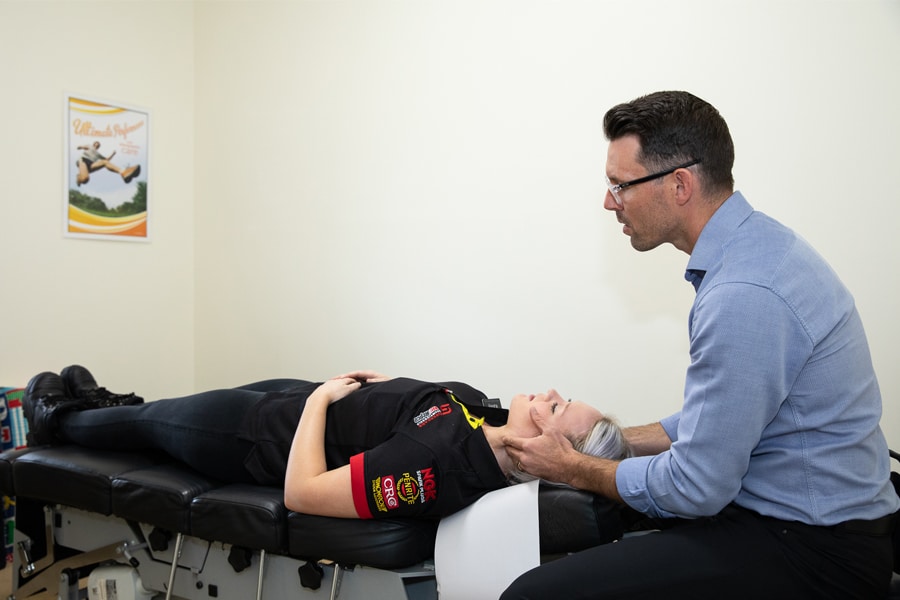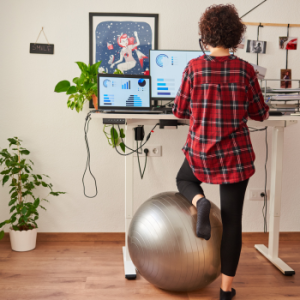The typical presentation of Benign Paroxysmal Positional Vertigo (BPPV) usually presents to my office with the following symptoms:
- Intermittent vertigo symptoms suffered by the patient for a period of weeks to months.
- Patient describes a distinct spinning sensation.
- The episodes last no longer the 15 seconds on average and are brought on a few seconds after changing positions. These are most commonly rolling in bed and when moving from lying to sitting positions.
- When the spinning sensation occurs there is a fast beating of the eye towards the affected ear.
If this sounds like you it is highly likely you are suffering from BPPV. However, during the history taking process, we want to first make sure about a few things:
- There is no sign of vascular compromise E.g. problems with speech, tingling, numbness etc.
- There are no sensations of aural fullness, hearing loss or tinnitus with the dizziness – This is indicative or Menier’s Disease and requires referral.
- No infection – Labyrinthitis could be at play if there is an infection.
- The dizziness lasts for approximatley 15-20 seconds and is brought on by positional changes as described above. If the symptoms last longer than 20 seconds and are not caused by positional changes, BPPV is not at play.
So what’s actually happening in the ear to cause this? Here comes technical stuff:
The inner ear has 3 semi-circular canals that are attached the utricle and saccule. Calcium Carbonate crystals make their way into the semi-circular canals from the otolothic membrane which sits over top of the utricle and saccule. The semicircular canals are a fluid based balance system and operate much the same as a builder’s spirit level. They detect head acceleration (general movement and changes in head position) by movement of the fluid in the canals. So when these calcium carbonate crystals move into the semi-circular canal they disrupt the movement of fluid and send false sensory signals regarding posture and joint position. These crystals literally make us feel like we are falling or spinning, even when we are dead still.
Due to Gravity and the anatomy of the 3 canals, the posterior canal is affected 85-90 % of the time. The other thing of interest is these crystals sediment in one spot due to gravity when there is no head movement. This explains why there is often a delayed reaction for 2-3 seconds after head movement before the vertigo kicks in. With head movement the previously stationary crystals move about again and disrupt the sensory signals for balance.
Once the history taking process has ruled out the other possibilities as described above we can then move on to the definitive test to confirm BPPV as our diagnosis. This is the Dix-Hallpike Manoeuvre. This test uses specific head movement to bring on the fast eye movement (Rotary Nystagmus) and vertigo. Once a positive is confirmed the best news is the manoeuvre to fix the vertigo is the Epley Manoeuvre and the first step is actually the dix hallpike which has already been done. The chiropractor then uses a series of specific, slow and controlled head and body rotations to move the crystals through the posterior semicircular canal and back into the vestibule where the crystals can be absorbed. (Think quarter turns of sausages when cooking a BBQ). In up to 85% of cases the vertigo is eliminated. Some may require more than one attempt.
This is a common problem and one in which we have treated many times before with great results at Northern Inland Chiropractic. If you or someone you know is suffering from BPPV we would love to be of service.
References and Abstracts
- Fife, T. D. (2009). Benign Paroxysmal Positional Vertigo. Seminars in Neurology, 29(5), 500–508
- Noda, K., Ikusaka, Ohira, Takada, & Tsukamoto. (2011). Predictors for benign paroxysmal positional vertigo with positive Dix-Hallpike test. International journal of general medicine, 809. doi:10.2147/IJGM.S27536
- Yacovino, D. A., Hain, T. C., & Gualtieri, F. (2009). New therapeutic maneuver for anterior canal benign paroxysmal positional vertigo. Journal of Neurology, 256(11), 1851-1855. doi:10.1007/s00415-009-5208-1
- Fife, T. D., Iverson, D. J., Lempert, T., Furman, J. M., Baloh, R. W., Tusa, R. J., et al. (2008). Practice Parameter: Therapies for benign paroxysmal positional vertigo (an evidence-based review). Neurology, 70(22), 2067–2074





